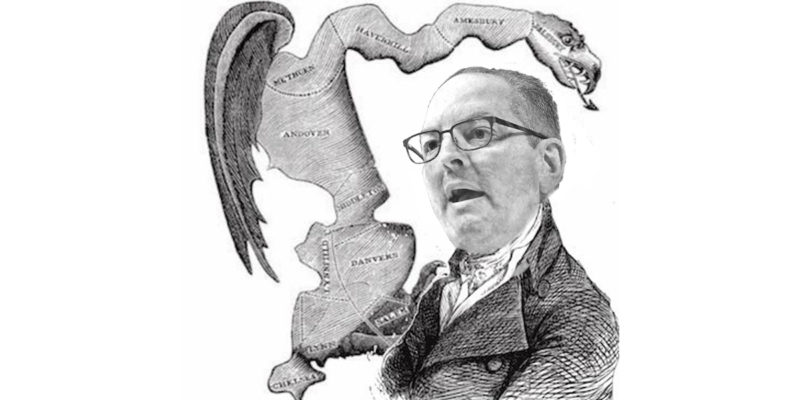Louisiana might be headed to the courts sooner rather than later given a key House of Representatives vote last week on its congressional reapportionment plan, and leaves Democrat Gov. John Bel Edwards with a gamble – with the choice he makes potentially rewriting election law, even as it retains a map similar to the present for the near future.
With the numbers against them because elections have consequences, Democrats angling for the creation of a second majority-minority for Congress out of the state’s six have prepared themselves for a judicial Hail Mary attempt. With the Republican-controlled Legislature poised to approve a map with one such district, even as almost a third of the state’s population is black, Democrats understand only through judicial intervention can they get their desired end.
Those odds aren’t good. Not only do the GOP plans – SB 5 in the Senate that has gone to the House, and the almost-identical HB 1 heading to the Senate – follow judicial guidelines, alternatives offered appear on their face unconstitutional because they draw boundaries predominantly on the basis of race, subordinating all other criteria. A U.S. Supreme Court decision on the constitutionality of that strategy appears certain to occur within the next 16 months, but not prior to fall, 2022 elections.
For the courts to intervene, one of two things has to happen for Louisiana: the state enacts a one M/M plan and Democrat-aligned special interests sue according to their playbook, or it is unable to reapportion because an impasse develops between the Legislature and Edwards, inviting a suit because of a constitutional one-man-one-vote impairment in keeping the current districts.
The latter could happen much later than the former, because the Legislature will have an opportunity to try again during its regular session, as opposed to sooner enactment because of a veto before February is out of a special session bill that could be overridden in early April (the Constitution and law dictate a veto session 40 days from the end of a session by acquiescence of more than half the members of each chamber, but is silent whether a regular session can stand in for a veto session; by that date the Legislature will be well into its regular session).
The latter possibility seems more likely now because of the House vote on HB 1. It drew exactly the 70 votes needed to override any veto, with all 68 Republicans on board plus Democrat state Reps. Travis Johnson and Francis Thompson.
Thompson represents House District 19, although at age 81 and looking to complete 48 years in the Legislature he may not run for reelection. Johnson, who also is not term-limited, represents HD 21. Both caused controversy in last summer’s historic veto session, when Thompson supported an override attempt of Edwards with the governor promptly removing him afterwards from a regional committee of states on which Thompson had served for decades, and when Johnson didn’t support the override after allegedly telling GOP Speaker Clay Schexnayder he would, the speaker removed him from a House committee.
A peek at HB 14, Schexnayder’s bill to reapportion the House, shows only minor adjustments to both districts. Thompson cedes a bit to Johnson, one of two white Democrats representing a majority black district, who has small boundary changes further south but ends up with a district with slightly less black voter composition. In contrast, every other district in the northern part of the state encountered arguably greater changes, if not outright elimination. And with the current HB 1 version having at least 70 votes, this likely will discourage any changes to HB 14 that would change more than trivially the boundaries on HD 19 or HD 21 as in HB 14.
Advertisement
Should this vote pattern remain the same, that means a one M/M bill could have approval about three months before qualification takes place, meaning with any legal challenge the U.S. Supreme Court would be unlikely stop fall elections using those lines because of the Purcell principle where the Court won’t cause changes to election parameters too close to an election. Yet should Edwards let it go through without a challenge, that gap becomes more like five months, which could allow the Court to pass on permitting an injunction and potentially inviting a judicial rewrite of the districts.
A rewrite only could benefit the leftist special interests involved, by forcing two M/M districts. However, it might not get that far because more likely the Court would defer back to its recent decision to engage in further extensive review of the entire question that would come after the election, leaving the current single M/M district map in place. And a favorable rewrite based upon what the Court’s future decision will be the left has grown pessimistic about, so it may not perceive its desired relief likely forthcoming.
Given the receding hope that the ultimately judiciary will back them, interests behind the two M/M strategy may wish to drag out the process, which means a veto. Additionally, that provides a bit more ammunition for their argument if Edwards doesn’t give a kind of approval against it. And, under fire for his role in encouraging misrepresentation of potential Louisiana State Police misconduct against a black motorist, Edwards has every incentive to placate black Democrats with use of the veto as he fights to save his job.
If this happens – gubernatorial disagreement with the Legislature – Louisiana will provide a unique data point for that future Court argumentation, as all other challenges to date have focused on situations where the law was enacted through agreement by both majoritarian branches of a state government. But, practically speaking, Louisiana still is on course for its fall congressional elections to feature just one M/M district, if not that becoming the case at least through 2030.
Advertisement
Advertisement

